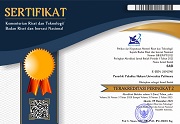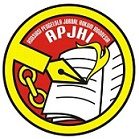Penegakan dan Perlindungan Hukum Terhadap Satwa Kuskus (Phalanger SPP) yang Dilindungi di Kota Ambon
 )
)
(1) Universitas Padjadjaran, Bandung, Indonesia, Indonesia
 Corresponding Author
Corresponding Author
Abstract
One of the animals favored by people and can be used as food for some people in Ambon City is cuscus (phalanger spp) is one of the long-tailed marsupial mammals and is also a part of natural resources that is priceless so that its sustainability needs to be maintained through various safeguards. In detail, the regulations concerning these animals are regulated in the regulation of the Minister of Environment and Forestry No. 20 of 2018 concerning the types of plants and animals that are protected. Protected animals are animals that have rarely existed and are therefore protected by various regulations. One of the actions which until now still often occurs and violates the rules in protecting animals is used as food (killed) for some people in Ambon City are cuscus (phalanger spp). The killing of wild animals is an act that has violated the provisions contained in Law No. 5 of 1990 concerning Conservation of Biological Resources and their Ecosystems. Where in article 21 paragraph (2) (a) it has been stated that the prohibition to kill protected animals. In an effort to protect the animals from killing, law enforcement against the trade of protected animals is a process of embodiment of the rules regarding the protection of animals in practice legally in order to realize the goal of protecting protected animals. Research based on normative law research (normative law research) uses normative case studies in the form of legal behavior products, for example reviewing laws. The subject of the study is a law conceptualized as a norm or rule that applies to society and becomes a reference for everyone's behavior. The application of criminal sanctions against some residents of Ambon City who consume cuscus animals (phalanger spp) does not work properly
Keywords
DOI
10.47268/sasi.v25i1.134
Published
2019-08-24
How To Cite
@article{SASI134,
author = {Fikry Latukau},
title = {Penegakan dan Perlindungan Hukum Terhadap Satwa Kuskus (Phalanger SPP) yang Dilindungi di Kota Ambon},
journal = {SASI},
volume = {25},
number = {1},
year = {2019},
keywords = {enforcement; protection law; cuscus},
abstract = {One of the animals favored by people and can be used as food for some people in Ambon City is cuscus (phalanger spp) is one of the long-tailed marsupial mammals and is also a part of natural resources that is priceless so that its sustainability needs to be maintained through various safeguards. In detail, the regulations concerning these animals are regulated in the regulation of the Minister of Environment and Forestry No. 20 of 2018 concerning the types of plants and animals that are protected. Protected animals are animals that have rarely existed and are therefore protected by various regulations. One of the actions which until now still often occurs and violates the rules in protecting animals is used as food (killed) for some people in Ambon City are cuscus (phalanger spp). The killing of wild animals is an act that has violated the provisions contained in Law No. 5 of 1990 concerning Conservation of Biological Resources and their Ecosystems. Where in article 21 paragraph (2) (a) it has been stated that the prohibition to kill protected animals. In an effort to protect the animals from killing, law enforcement against the trade of protected animals is a process of embodiment of the rules regarding the protection of animals in practice legally in order to realize the goal of protecting protected animals. Research based on normative law research (normative law research) uses normative case studies in the form of legal behavior products, for example reviewing laws. The subject of the study is a law conceptualized as a norm or rule that applies to society and becomes a reference for everyone's behavior. The application of criminal sanctions against some residents of Ambon City who consume cuscus animals (phalanger spp) does not work properly},
issn = {2614-2961}, pages = {49--58} doi = {10.47268/sasi.v25i1.134},
url = {https://fhukum.unpatti.ac.id/jurnal/sasi/article/view/134}
}
Barber, Charles Victor, dkk. (1997). Meluruskan Arah Pelestarian Keanekaragaman Hayati dan Pembangunan di Indonesia, Jakarta: Yayasan Obor Indonesia.
Fatchan, A (2013). Georafi Tumbuhan dan Hewan, Yogyakarta: Penerbit Ombak.
Kelsen, Hans. (1967). Teori Hukum Murni, Nusa Media.
Lamintang, A.F. (1996). Dasar-Dasar Hukum Pidana Indonesia. Bandung: Citra Adityta Bakti.
Raharjo, Satjipto. (2000). Ilmu Hukum, Bandung: Citra Aditya Bakti.
Saifullah, (2007). Hukum Lingkungan Paradigma Kebijakan Kriminal di Bidang Konservasi Keanekaragaman Hayati, Malang: UIN Malang Press.
Supriadi, (2008). Hukum Lingkungan Indonesia, Jakarta: Sinargrafika.
Sunarso, Siswanto. (2014). Victimologi Dalam Sistem Peradilan Pidana, Jakarta: Sinar Grafika.
Widada, Sri Mulyati dan Hirosi Kobayashi. (2006). Sekilas Tentang Konservasi Sumber Daya Alam Hayati dan Ekosistemnya, Jakarta: Perlindungan Hukan dan Konservasi Alam.
Rahardjo, Satjipto. (1987). Keadaan dan Permasalahan dalam Penegakan Hukum Dewasa ini. Simposium FH UNDIP.
| Dublin Core | PKP Metadata Items | Metadata for this Document | |
| 1. | Title | Title of document | Penegakan dan Perlindungan Hukum Terhadap Satwa Kuskus (Phalanger SPP) yang Dilindungi di Kota Ambon |
| 2. | Creator | Author's name, affiliation, country | Fikry Latukau; Universitas Padjadjaran, Bandung, Indonesia; Indonesia |
| 3. | Subject | Discipline(s) | |
| 3. | Subject | Keyword(s) | enforcement; protection law; cuscus |
| 4. | Description | Abstract | One of the animals favored by people and can be used as food for some people in Ambon City is cuscus (phalanger spp) is one of the long-tailed marsupial mammals and is also a part of natural resources that is priceless so that its sustainability needs to be maintained through various safeguards. In detail, the regulations concerning these animals are regulated in the regulation of the Minister of Environment and Forestry No. 20 of 2018 concerning the types of plants and animals that are protected. Protected animals are animals that have rarely existed and are therefore protected by various regulations. One of the actions which until now still often occurs and violates the rules in protecting animals is used as food (killed) for some people in Ambon City are cuscus (phalanger spp). The killing of wild animals is an act that has violated the provisions contained in Law No. 5 of 1990 concerning Conservation of Biological Resources and their Ecosystems. Where in article 21 paragraph (2) (a) it has been stated that the prohibition to kill protected animals. In an effort to protect the animals from killing, law enforcement against the trade of protected animals is a process of embodiment of the rules regarding the protection of animals in practice legally in order to realize the goal of protecting protected animals. Research based on normative law research (normative law research) uses normative case studies in the form of legal behavior products, for example reviewing laws. The subject of the study is a law conceptualized as a norm or rule that applies to society and becomes a reference for everyone's behavior. The application of criminal sanctions against some residents of Ambon City who consume cuscus animals (phalanger spp) does not work properly |
| 5. | Publisher | Organizing agency, location | Faculty of Law, Universitas Pattimura |
| 6. | Contributor | Sponsor(s) | |
| 7. | Date | (YYYY-MM-DD) | 2019-08-24 |
| 8. | Type | Status & genre | Peer-reviewed Article |
| 8. | Type | Type | |
| 9. | Format | File format | PDF (Bahasa Indonesia) |
| 10. | Identifier | Uniform Resource Identifier | https://fhukum.unpatti.ac.id/jurnal/sasi/article/view/134 |
| 10. | Identifier | Digital Object Identifier | 10.47268/sasi.v25i1.134 |
| 11. | Source | Title; vol., no. (year) | SASI; Vol 25, No 1 (2019): Volume 25 Nomor 1, Januari - Juni 2019 |
| 12. | Language | English=en | id |
| 13. | Relation | Supp. Files | |
| 14. | Coverage | Geo-spatial location, chronological period, research sample (gender, age, etc.) | |
| 15. | Rights | Copyright and permissions | Copyright: Authors who publish their manuscripts in this Journal agree to the following conditions: 1. The copyright in each article belongs to the author, as well as the right to patent. 2. Authors can enter into separate, additional contractual arrangements for the non-exclusive distribution of the journal's published version of the work (e.g., post it to an institutional repository or publish it in a book), with an acknowledgment of its initial publication in this journal. 3. Authors are permitted and encouraged to post their work online (e.g., in institutional repositories or on their website) before and during the submission process, as it can lead to productive exchanges, as well as earlier and greater citation of published work. 4. Authors have the right to self-archiving of the article (Author Self-Archiving Policy)
License: The SASI Journal is disseminated based on the Creative Commons Attribution-NonCommercial 4.0 International license terms. This license allows anyone to copy and redistribute this material in any form or format, compose, modify, and make derivatives of this material for any purpose. You cannot use this material for commercial purposes. You must specify an appropriate name, include a link to the license, and certify that any changes have been made. You can do this in a way that is appropriate but does not imply that the licensor supports you or your use.
|
Copyright (c) 2019 Fikry Latukau

This work is licensed under a Creative Commons Attribution-NonCommercial 4.0 International License.

 : 3095 times
: 3095 times Download : 1271 times
Download : 1271 times
















